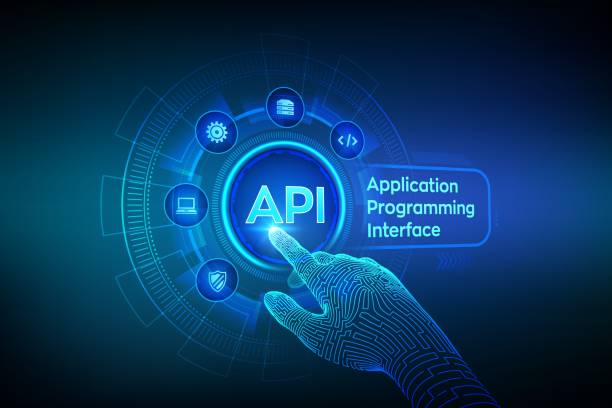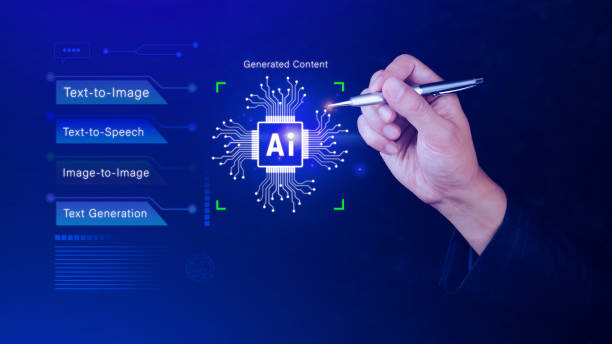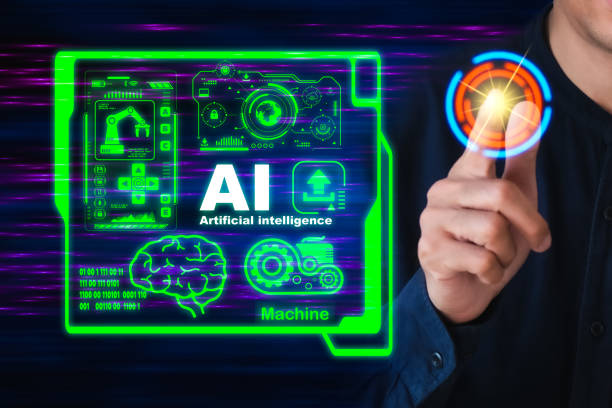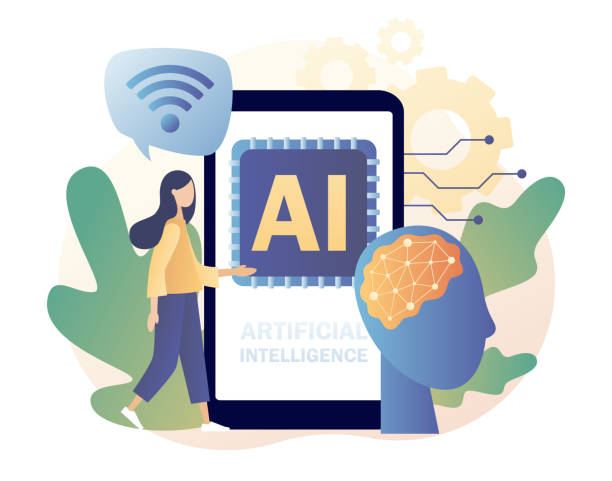What is an Artificial Intelligence Robot? Definition and Basic Concepts

#Artificial_Intelligence_Robot refers to an intelligent agent capable of performing tasks that typically require human intelligence.
These tasks can include learning, reasoning, problem-solving, natural language understanding, and pattern recognition.
Unlike traditional robots that operate solely based on pre-programmed instructions, artificial intelligence robots are capable of adapting to new situations and learning from their experiences.
This capability has made them a powerful tool in various industries.
Artificial intelligence itself is a broad field encompassing various techniques and algorithms aimed at simulating human cognitive processes in machines.
Artificial intelligence robots use these techniques for decision-making, prediction, and performing complex tasks.
One of the key features of artificial intelligence robots is their ability to machine learn.
Machine learning allows robots to identify patterns by analyzing data and improve their performance.
This process is carried out without the need for explicit programming for each scenario.
In other words, an artificial intelligence robot can upgrade its skills with experience.
As a result, artificial intelligence robots have found widespread applications in fields such as medicine, manufacturing, customer service, and finance.
These tools can help improve efficiency, reduce costs, and provide better services.
Does your current website display your brand’s credibility as it should? Or does it drive away potential customers?
Rasawb, with years of experience in designing professional corporate websites, is your comprehensive solution.
✅ A modern, beautiful website tailored to your brand identity
✅ A significant increase in lead generation and new customers
⚡ Contact Rasawb now for a free corporate website design consultation!
Types of Artificial Intelligence Robots Based on Application and Level of Intelligence

Artificial intelligence robots can be divided into different categories based on their application and level of intelligence.
In terms of application, we can refer to industrial robots, service robots, medical robots, and military robots.
Industrial robots are used in production lines to perform repetitive and dangerous tasks.
Service robots are used in public environments such as hospitals and hotels to provide services to customers.
Medical robots assist doctors in surgeries and disease diagnosis, and military robots are used in reconnaissance and bomb disposal operations.
Each of these types of artificial intelligence robots has its own specific features and capabilities that make them suitable for performing specific tasks.
In terms of the level of intelligence, artificial intelligence robots can range from simple systems with limited capabilities to complex systems with advanced cognitive abilities.
Simple robots may only be capable of performing pre-defined tasks, while advanced robots can solve complex problems and make independent decisions.
Developing advanced artificial intelligence robots requires the use of complex algorithms and extensive data.
With the advancement of technology, the level of intelligence of robots is constantly increasing, which allows for the performance of more complex and diverse tasks.
Artificial intelligence robots are, in fact, a powerful tool that can help improve human lives.
Advantages of Using Artificial Intelligence Robots in Various Industries

The use of artificial intelligence robots in various industries has many advantages.
One of the most important advantages is increased productivity and reduced costs.
Robots can work 24 hours a day without the need for rest, which leads to increased production and reduced task completion times.
In addition, robots can perform dangerous and repetitive tasks, which increases the safety of employees and prevents accidents.
Artificial intelligence robots work with high accuracy and reduce the likelihood of errors.
Another advantage of using artificial intelligence robots is improved product and service quality.
Robots can identify product defects using advanced sensors and cameras and prevent the production of defective products.
In addition, robots can provide customer services quickly and efficiently, which increases customer satisfaction.
In fields such as medicine, artificial intelligence robots can help with more accurate disease diagnosis and the provision of more effective treatments.
Overall, artificial intelligence robots can help improve the performance and competitiveness of organizations.
| Industry | Application of Artificial Intelligence Robots |
|---|---|
| Manufacturing | Automated production lines, quality control |
| Medicine | Robotic surgery, disease diagnosis |
| Customer Service | Chatbots, answering questions |
| Finance | Risk analysis, automated trading |
Challenges of Implementing and Using Artificial Intelligence Robots

Despite the many advantages, implementing and using artificial intelligence robots has its own specific challenges.
One of the most important challenges is the high cost of purchasing, installing, and maintaining robots.
Advanced robots require significant investment, which can be a major barrier for many organizations.
In addition, robots require periodic maintenance and repair, which entails additional costs.
Artificial intelligence robots require technical expertise.
Another challenge is the need for technical expertise and employee training.
To effectively use robots, employees must receive the necessary training to be able to program, control, and repair the robots.
This requires time and expense.
There are also concerns about job losses due to the replacement of human labor with robots.
Artificial intelligence robots can perform some human tasks, but creating new job opportunities is also essential.
Cybersecurity is also a major challenge, as robots can be targeted by cyberattacks and put sensitive information at risk.
Therefore, organizations must take the necessary measures to protect their robots against cyberattacks.
Are you frustrated by the low conversion rate of your online store?
Rasawb offers a definitive solution with professional e-commerce website design!
✅ Increase your sales and revenue
✅ Unparalleled user experience for your customers
⚡ Get a free consultation now!
Impact of Artificial Intelligence Robots on the Labor Market and Employment

The impact of artificial intelligence robots on the labor market and employment is a much-discussed and examined topic.
Some experts believe that robots will lead to the loss of many jobs, while others believe that robots will create new job opportunities.
The reality is that robots will likely have both effects.
Artificial intelligence robots can automatically perform repetitive and dangerous tasks, which leads to a reduced need for human labor in some industries.
On the other hand, robots can create new job opportunities in fields such as robot design, manufacturing, maintenance, and programming.
In addition, robots can help increase productivity and economic growth, which leads to the creation of more jobs in other industries.
To address the negative impacts of robots on the labor market, governments and organizations should provide training and retraining programs so that employees can acquire new skills and prepare for future jobs.
The future of work requires adaptation to new technologies, and artificial intelligence robots will play an important role in this transformation.
Future of Artificial Intelligence Robots: Prospects and Possibilities

The future of artificial intelligence robots is very bright and full of possibilities.
With the advancement of technology, robots will be able to perform more complex tasks and be used in more areas.
It is predicted that robots will play an important role in people’s daily lives in the future and help improve the quality of life.
Artificial intelligence robots will be present in homes, schools, hospitals, and workplaces and will help perform various tasks.
One of the areas where significant progress is expected is autonomous robots.
These robots will be able to make decisions and perform their tasks without the need for human intervention.
Autonomous robots can be used in areas such as transportation, agriculture, and space exploration.
In addition, it is expected that robots with stronger artificial intelligence will be able to understand and respond to human emotions, which allows for more human and effective interactions.
Artificial intelligence robots are, in fact, a transformative technology that can help solve many global problems.
Ethical Considerations in Designing and Using Artificial Intelligence Robots

Designing and using artificial intelligence robots comes with important ethical considerations.
One of the most important considerations is accountability.
If a robot makes a mistake or causes damage, who will be responsible? Should the robot’s manufacturer, the robot’s user, or the robot itself bear the responsibility? These questions require careful consideration and the establishment of specific rules and regulations.
Artificial intelligence robots should not be designed in a way that harms humans.
Another ethical consideration is privacy.
Robots can collect a lot of information about users, which raises concerns about the misuse of this information.
Organizations must ensure that information collected by robots is stored securely and used only for legitimate purposes.
Artificial intelligence robots should not be discriminatory and should provide services fairly to all individuals.
In addition, there are concerns about the replacement of human labor with robots and its impact on social justice.
Therefore, the design and use of artificial intelligence robots require attention to ethical issues and efforts to create a strong ethical framework.
| Ethical Issue | Description |
|---|---|
| Accountability | Determining responsibility in case of errors or damages |
| Privacy | Protecting information collected by robots |
| Justice | Preventing discrimination and ensuring fair service delivery |
| Security | Protecting robots against cyberattacks |
How to Choose and Implement an Artificial Intelligence Robot?

Choosing and implementing an artificial intelligence robot requires careful planning and assessment of the organization’s specific needs.
The first step is to define the goals and expectations of the robot.
The organization must specify what tasks the robot will be used for and what results it expects from it.
Artificial intelligence robots must be compatible with the organization’s needs.
The second step is to research and review the types of robots available in the market.
The organization should review the different types of robots and choose the robot that is the best option for its needs.
At this stage, factors such as cost, capabilities, compatibility with existing systems, and technical support should be considered.
The third step is implementation and training.
After selecting the robot, it must be properly implemented and employees trained to use it effectively.
At this stage, factors such as installation, configuration, programming, and robot maintenance should be considered.
Artificial intelligence robots should be continuously evaluated and optimized to improve their performance.
The final step is evaluation and optimization.
After implementation, the performance of the robot should be continuously evaluated and, if necessary, the necessary optimizations should be made.
This helps the organization to use the robot effectively and achieve its goals.
Are you lagging behind in competition with large online stores?
Rasawb, with professional e-commerce website design, puts your business online and increases your market share!
✅ Increase brand credibility and customer trust
✅ Easy shopping experience leads to more sales
⚡ Take action now to receive a free website design consultation!
Key Concepts in Machine Learning for Artificial Intelligence Robots

Machine Learning is one of the key concepts in the development of artificial intelligence robots.
Machine learning allows robots to identify patterns by analyzing data and improve their performance.
Machine learning algorithms help robots to upgrade their skills with experience, without the need for explicit programming for each scenario.
Artificial intelligence robots use machine learning algorithms for decision-making, prediction, and performing complex tasks.
There are different types of machine learning algorithms, including Supervised Learning, Unsupervised Learning, and Reinforcement Learning.
Supervised learning allows robots to learn the relationships between inputs and outputs using labeled data.
Unsupervised learning allows robots to identify hidden patterns and structures in unlabeled data.
Reinforcement learning allows robots to learn optimal behavior through trial and error.
Artificial intelligence robots can continuously improve their performance and achieve their goals using these algorithms.
Machine learning plays an important role in the development of intelligent robots and allows them to operate independently and perform complex tasks.
Case Study of Successful Applications of Artificial Intelligence Robots in Iran and the World

A case study of the successful applications of artificial intelligence robots in Iran and the world can help to better understand the potential of this technology.
In Iran, artificial intelligence robots have been used in fields such as industry, medicine, and customer service.
For example, some manufacturing companies use robots to perform repetitive and dangerous tasks on production lines, which has led to increased productivity and reduced costs.
Artificial intelligence robots are used in hospitals to assist doctors in diagnosing diseases and providing more effective treatments.
Globally, artificial intelligence robots are used in a much wider range of fields.
For example, companies like Tesla use robots to produce self-driving cars, which has led to increased production speed and accuracy.
Companies like Amazon use robots in their warehouses to move and sort goods, which has led to reduced delivery times.
Artificial intelligence robots also have wide applications in areas such as space exploration, precision agriculture, and financial services.
These case studies show that artificial intelligence robots can help improve the performance and competitiveness of organizations and help solve many global problems.
Artificial intelligence robots are a powerful technology that can help improve human lives.
Frequently Asked Questions
| Row | Question | Answer |
|---|---|---|
| 1 | What is an Artificial Intelligence Robot? | An artificial intelligence robot is a machine capable of understanding, reasoning, learning, and problem-solving, and it can perform complex tasks with relative autonomy. |
| 2 | What are the most important applications of artificial intelligence robots? | The main applications include industrial manufacturing, customer service (chatbots), medicine and surgery, autonomous transportation, space exploration, and military affairs. |
| 3 | What is the main difference between an artificial intelligence robot and a regular robot? | A regular robot only follows pre-programmed instructions, while an artificial intelligence robot can learn from data, make decisions, and adapt itself to new environments. |
| 4 | How do artificial intelligence robots learn? | They learn through machine learning algorithms (such as deep learning, reinforcement learning) and processing vast amounts of data, identifying patterns, and improving their performance. |
| 5 | Can artificial intelligence robots have emotions? | Currently, artificial intelligence robots do not have real emotions in the human sense. They can mimic or recognize emotions, but they do not understand or experience them. |
| 6 | What are the current limitations of artificial intelligence robots? | Limitations include the need for large amounts of data, the inability to understand abstract concepts, the lack of real creativity, ethical issues, and challenges of generalizability in new environments. |
| 7 | What is the role of artificial intelligence in the development of Humanoid robots? | Artificial intelligence helps humanoid robots walk, maintain their balance, understand their surroundings, interact with humans, and perform complex tasks. |
| 8 | How is the future of artificial intelligence robots predicted? | It is predicted that artificial intelligence robots will become smarter, more autonomous, and capable of performing more complex tasks in daily life and industry, and their interaction with humans will increase. |
| 9 | Can artificial intelligence robots replace all human jobs? | It is unlikely that all human jobs will be replaced. Robots will take over many repetitive and dangerous tasks, but jobs that require creativity, empathy, and ethical judgment will remain. |
| 10 | What ethical and social challenges arise with the expansion of artificial intelligence robots? | Challenges include issues related to privacy, data security, ethical decision-making by robots, the impact on employment, and accountability in case of errors. |
And other services of Rasa Web advertising agency in the field of advertising
Smart data analysis: Designed for businesses looking to manage campaigns through Google Ads management.
Smart marketing automation: A new service to increase digital branding through a SEO-oriented content strategy.
Smart customer journey map: A new service to increase SEO ranking improvement through customizing the user experience.
Smart advertising campaign: Transform click-through rate with the help of precise audience targeting.
Smart UI/UX: A combination of creativity and technology to analyze customer behavior through precise audience targeting.
And over a hundred other services in the field of internet advertising, advertising consulting and organizational solutions
Internet advertising | Advertising strategy | Advertorial
Resources
What is artificial intelligence?
,Artificial intelligence in IBM
,What is artificial intelligence?
,Artificial intelligence news and articles
? Rasa Web Digital Marketing Agency Afrin, by providing comprehensive and innovative services, from fast website design to complex SEO strategies, smooths the path to your business success in the online space.
📍 Tehran, Mirdamad Street, next to the Central Bank, South Kazerun Alley, Ramin Alley No. 6
“`




